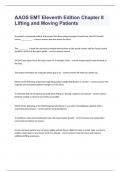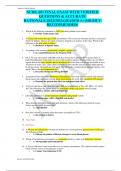Samenvatting
Summary Verbeke Strategy & International Business useful for learning all details and concepts
This detailed summary on Alain Verbeke captures all theory and is of particular use for those who are not willing to buy the expensive book online or want to go through 700 pages . This -75 page summary contains every detail and concept you need to know for passing the exam with success. On this s...
[Meer zien]














